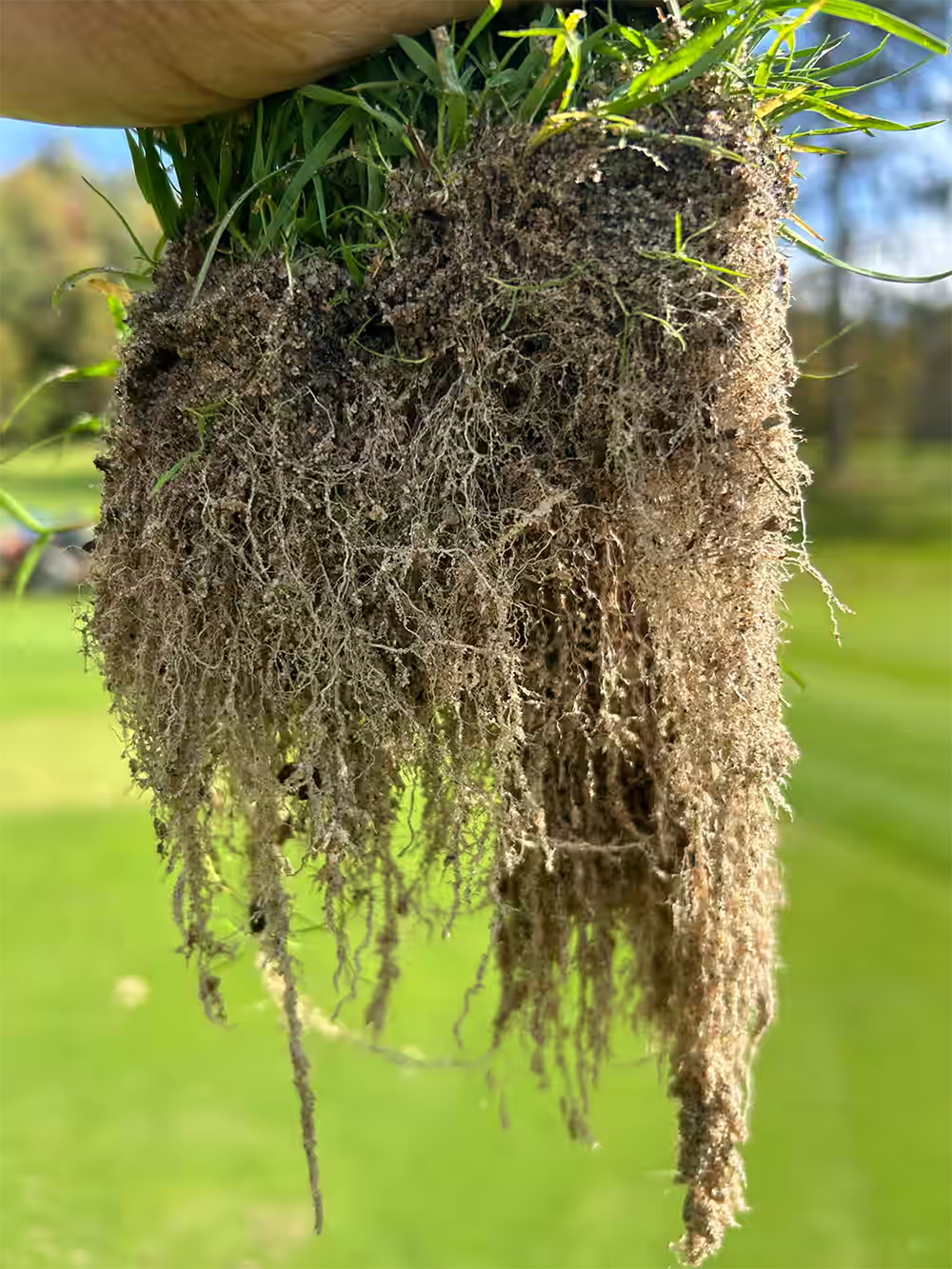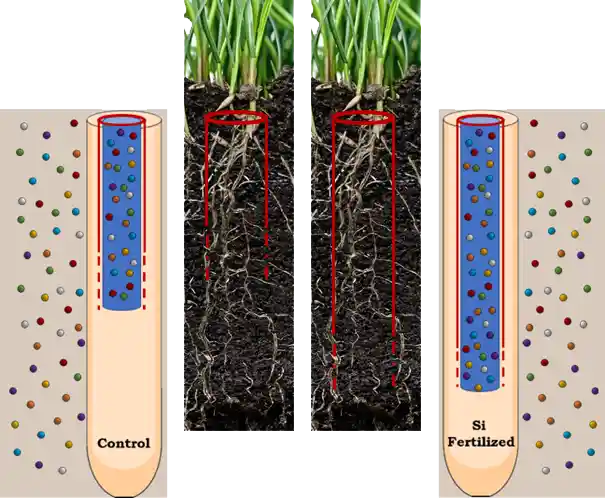Benefits of silicon
Silicon is a natural element which makes up almost 90% of the earths crust and is commonly found as sand (silicate dioxide). We supply products that provide plants with bioactive silicon in the form of monosilicic acid.
How it works
Once absorbed, silicon travels throughout the plant and is deposited in silicon specific cells. It then acts to strengthen the plant and enhance its natural defense properties. Silicon is deposited in the roots, leaves, stems and even fruit and grain.
Silicon strengthens the cell walls and allows plants to create a tough outer coating with extra leaf hairs. This makes it much harder for feeding pests to penetrate and also restricts the growth of fungal hyphae. Following cell absorption, deposited silicon becomes immobile. However, plants are able to redirect freshly absorbed silicon to areas of stress or attack as part of their natural defense system. Regular applications are therefore important.
Increases resistance to abiotic stress
With tougher internal structures, plants are more able to tolerate conditions such as extreme heat, cold, drought and wear, resulting in reduced levels of wilting and lodging across a wide range of crops
With reduced stress, plants can focus their energy elsewhere. In studies, we observe increased levels of photosynthesis leading to larger fruits/increased grain fill and increased brix in some varieties. We also see the benefit of early varieties cropping even earlier.
Balances uptake of other elements
Silicon encourages the absorption of beneficial elements such as zinc, calcium and nitrogen. It also acts to regulate levels of phosphorus uptake and prevent toxicity from trace metals in the growing medium.
Silicon can be applied at every turf growth stage and using a variety of application methods, including direct to soil, via fertigation and as a foliar spray. Strengthen plants and reduce chemical input with a sustainable, natural plant protection choice.
SILICON: A VITAL NUTRIENT FOR TURFGRASS HEALTH
Silicon plays a crucial role in the growth of all plants, particularly grasses. Grasses possess specialized silica cells designed to store silicon, forming deposits within the epidermal layer. Remarkably, the amount of silicon grasses can absorb rivals that of nitrogen, highlighting its importance in turfgrass nutrition.
SILICON MINIMIZES EXCESS TRANSPIRATION
Transpiration is essential for transporting nutrients from the soil to the roots and blades of turfgrass. However, when plants lack adequate nutrients, they increase transpiration to draw in more water and nutrients, consuming additional energy in the process. Turfgrass constantly seeks silicon, and a deficiency leads to increased water loss and energy expenditure. Silicon helps meet this demand, optimizing the plant’s nutrient uptake and reducing unnecessary transpiration.
Excess Transpiration
Normal Transpiration
SILICON ENHANCES CELL WALL STRENGTH
By storing silicon in specialized cells, turfgrass develops strong, uniform structures capable of efficiently absorbing nutrients and distributing water throughout the plant. Without sufficient silicon, these cells weaken, compromising the epidermal layer’s integrity, flexibility, and tensile strength. Silicon ensures that your turf maintains robust and elastic cell walls for healthier growth.
SILICON SUPPORTS ROOT DEVELOPMENT
Silicon encourages the formation of root barriers, which enhance nutrient absorption and sustain root growth under challenging conditions. These barriers shield turfgrass roots from waterlogged soils during wet periods and help retain moisture in the roots during dry spells. This balance allows turf to adapt to seasonal extremes, ensuring resilience through both wet and dry conditions.
Silico Turf LLC
Our Markets

Market / 01
Golf Turf

Market / 02
Sports Turf




